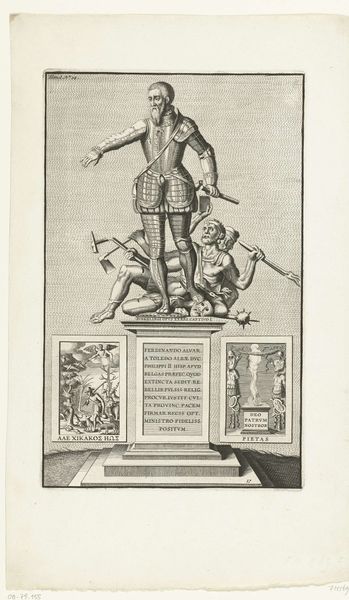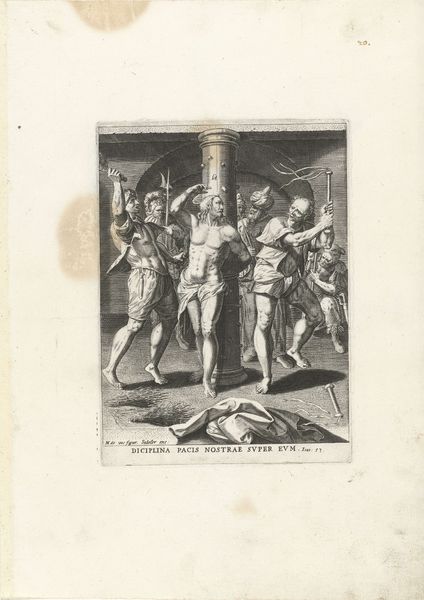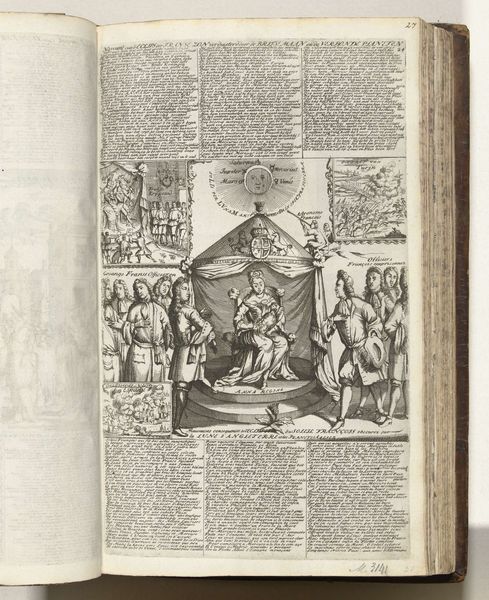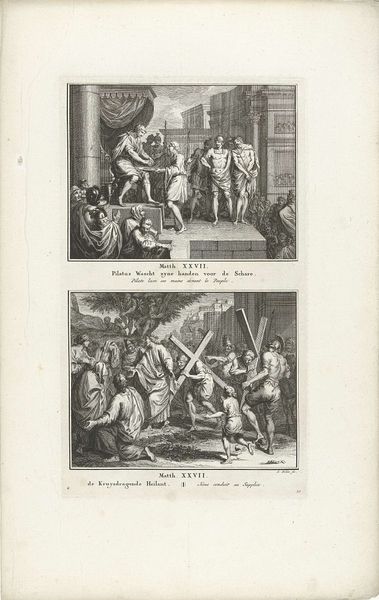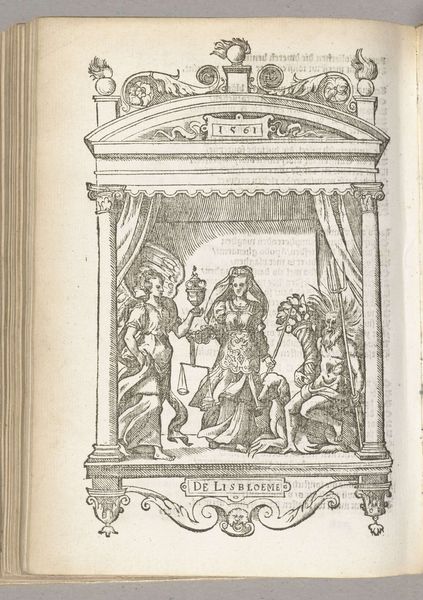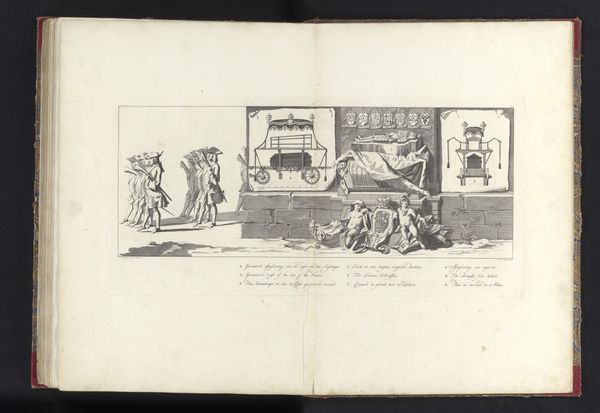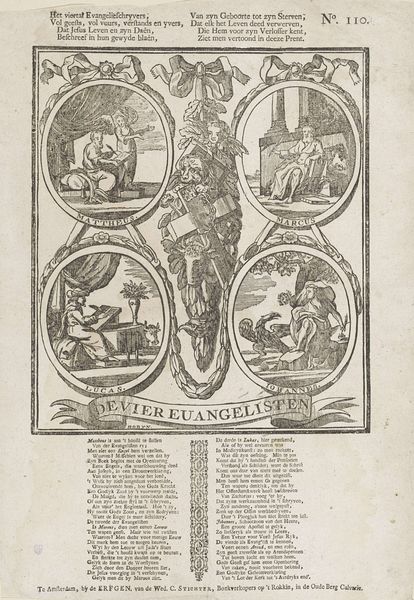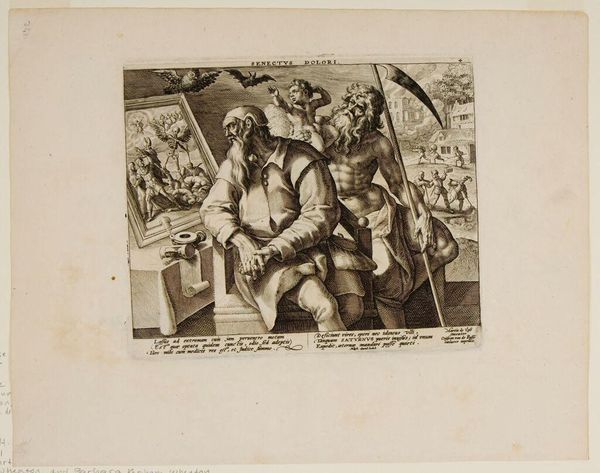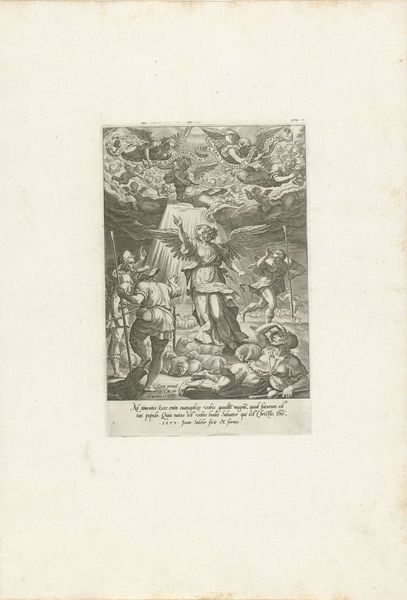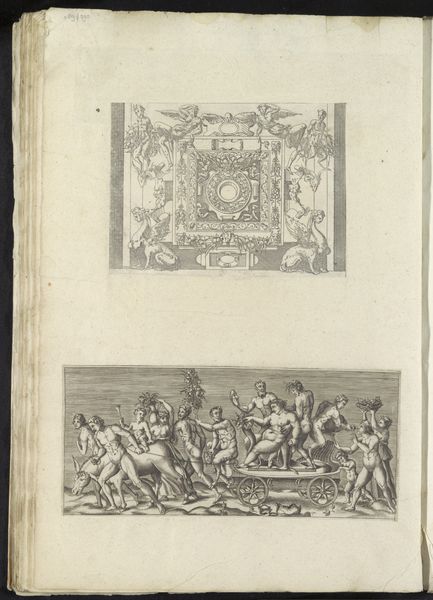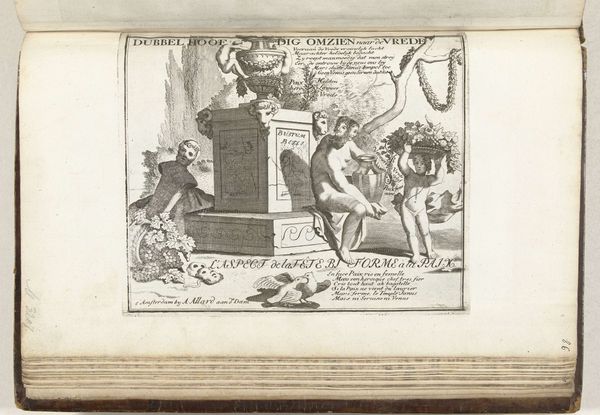
print, engraving
#
portrait
#
baroque
# print
#
pen illustration
#
old engraving style
#
figuration
#
history-painting
#
engraving
Dimensions: height 167 mm, width 124 mm
Copyright: Rijks Museum: Open Domain
Curator: Welcome. Let’s spend a few minutes contemplating this fascinating engraving from the 17th century, found here at the Rijksmuseum. The work depicts a statue of the Duke of Alva, a controversial figure in Dutch history. Editor: It strikes a rather unsettling tone, doesn’t it? There’s a definite sense of unease communicated through the almost frantic energy of the line work and the subject matter. I find it rather intense. Curator: Yes, the piece undeniably projects power, doesn’t it? Its visual rhetoric demands analysis. Think about the Duke’s pose – one foot firmly planted on defeated figures. And notice the pedestal, adorned with what appear to be symbols and inscriptions. Editor: Absolutely. And consider who Alva was: a symbol of Spanish oppression in the Netherlands. To see him immortalized, even in this small engraving, requires critical interrogation. It is crucial to ask what this monument meant to the Dutch at that time. How were they forced to memorialize these oppresive forces? Curator: Indeed. As historians, we investigate how such imagery operated within specific contexts, which sheds light on broader cultural and political dynamics. Baroque art frequently intertwined with such political grandstanding. Editor: Right. Baroque loved that type of triumphal posturing. What I want to emphasize, though, is its continued resonance. Looking at this piece, the act of commemorating individuals who were once perpetrators of mass violence can still cause a lot of emotional friction, right? How are such public works being reconciled? How are these things addressed? How are these memorializations subverted? Curator: That's an astute point. Historical understanding isn't just about archiving; it is about recognizing that echoes and engaging with the continued cultural and societal implications that these images perpetuate. Editor: Agreed. The image stays with you, urging dialogue between past and present, a visceral and potent conversation. Curator: Well, a great reminder of art’s complex relationships to power. Thanks for lending your insightful perspective.
Comments
No comments
Be the first to comment and join the conversation on the ultimate creative platform.
